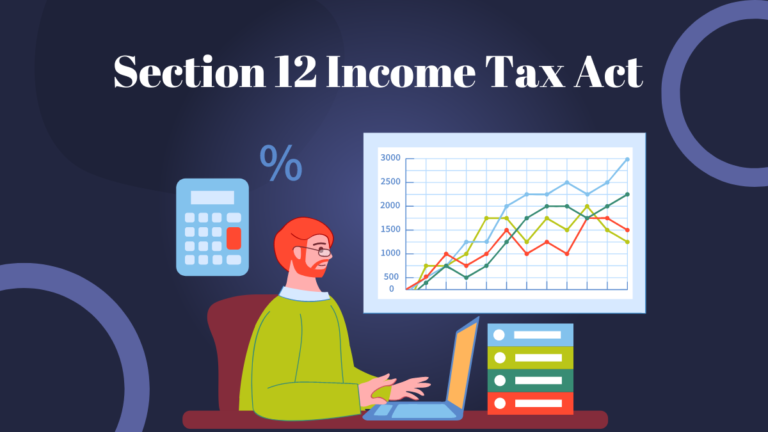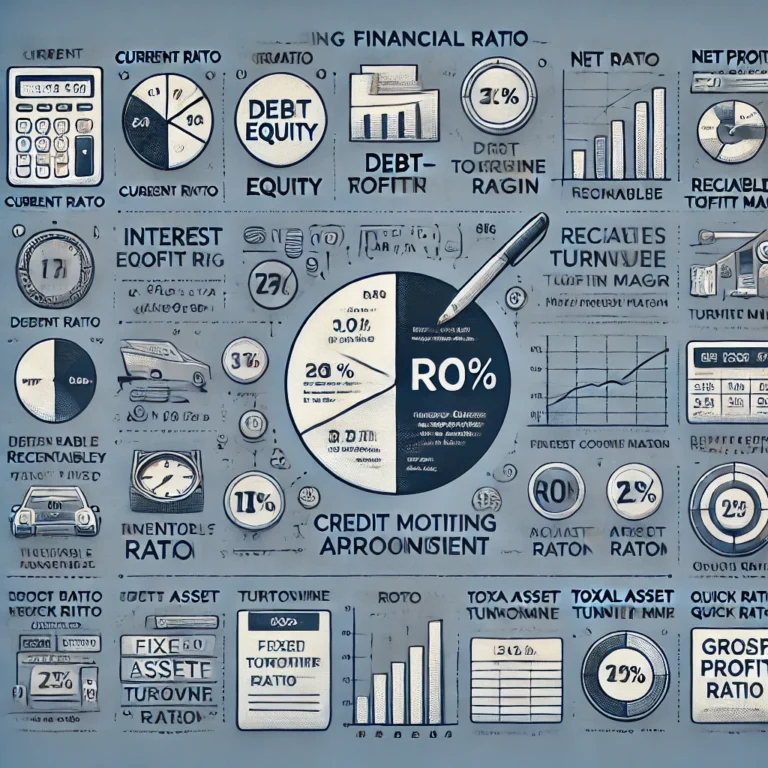Navigating the complexities of the Income Tax Act can be challenging, especially when it comes to capital gains. Section 54E of the Income Tax Act provides significant relief for taxpayers by offering exemptions on long-term capital gains if the proceeds are reinvested in specified financial assets. This comprehensive guide will delve into the details of Section 54E, including the conditions, specified assets, and implications for taxpayers.
What is Section 54E?
Section 54E of the Income Tax Act allows taxpayers to claim exemptions on long-term capital gains arising from the transfer of certain capital assets. The key condition is that the taxpayer must reinvest the net consideration from the sale into specified financial assets within six months from the date of transfer. This provision helps promote reinvestment into productive financial assets while offering tax relief to taxpayers.
Key Provisions of Section 54E
Eligibility:
The exemption under Section 54E is applicable to long-term capital assets, which are assets held for more than 36 months before transfer.
Investment Timeline:
The reinvestment must occur within six months from the date of transfer of the original asset.
Specified Assets:
- The net consideration must be invested in specified financial assets, which include:
- Securities of the Central Government or a State Government.
- Savings certificates as defined in the Government Savings Certificate Act, 1959.
- Units in the Unit Trust of India.
- Specified debentures notified by the Central Government.
- Shares in any Indian company listed on a recognized stock exchange in India.
- Deposits with the State Bank of India, its subsidiaries, any nationalized bank, or any cooperative society engaged in banking.
Calculation of Exempt Capital Gain
The calculation of exempt capital gain under Section 54E depends on whether the entire net consideration or only a part is reinvested in specified assets. The exempt capital gain is calculated as follows:
- If the cost of the new asset is equal to or more than the net consideration, the entire capital gain is exempt from tax.
- If the cost of the new asset is less than the net consideration, the proportionate capital gain is exempt, calculated as: Exempt Capital Gain=(Cost of New AssetNet Consideration)×Capital Gain\text{Exempt Capital Gain} = \left( \frac{\text{Cost of New Asset}}{\text{Net Consideration}} \right) \times \text{Capital Gain}Exempt Capital Gain=(Net ConsiderationCost of New Asset)×Capital Gain
Implications of Early Transfer or Conversion
If the new asset is transferred or converted into money within three years from the date of acquisition, the previously exempted capital gain becomes taxable in the year of such transfer or conversion. Additionally, taking a loan or advance on the security of the new asset within three years is also treated as a conversion into money, making the capital gain taxable.
Special Provisions for Compulsory Acquisition
In cases where the original asset is transferred by way of compulsory acquisition and the full compensation is not received immediately, the six-month period for reinvestment is counted from the date of receipt of the compensation.

Reporting and Compliance
Taxpayers must report the investment details under Section 54E in their income tax return, including the amount of capital gains, the amount invested, and the type of specified asset. Maintaining documentation of the investment is crucial for verification purposes.01
Practical Examples of Section 54E
Example 1: Full Investment in Specified Assets
Mr. A sold a long-term capital asset for Rs. 50 lakh, resulting in a capital gain of Rs. 10 lakh. He reinvested the entire net consideration of Rs. 50 lakh in specified government securities within six months. Since the reinvestment is equal to the net consideration, the entire capital gain of Rs. 10 lakh is exempt from tax under Section 54E.
Example 2: Partial Investment in Specified Assets
Ms. B sold a long-term capital asset for Rs. 60 lakh, resulting in a capital gain of Rs. 20 lakh. She reinvested Rs. 30 lakh in specified debentures within six months. The exempt capital gain is calculated as:
Exempt Capital Gain=(Cost of New AssetNet Consideration)×Capital Gain=(30,00,00060,00,000)×20,00,000=10,00,000\text{Exempt Capital Gain} = \left( \frac{\text{Cost of New Asset}}{\text{Net Consideration}} \right) \times \text{Capital Gain} = \left( \frac{30,00,000}{60,00,000} \right) \times 20,00,000 = 10,00,000Exempt Capital Gain=(Net ConsiderationCost of New Asset)×Capital Gain=(60,00,00030,00,000)×20,00,000=10,00,000
Thus, Rs. 10 lakh of the capital gain is exempt from tax, and the remaining Rs. 10 lakh is taxable.
Frequently Asked Questions (FAQ) About Section 54E of the Income Tax Act
What is Section 54E of the Income Tax Act?
Section 54E of the Income Tax Act provides tax exemptions on long-term capital gains if the proceeds are invested in specified financial assets within six months of the transfer.
What qualifies as a long-term capital asset under Section 54E?
A long-term capital asset is typically an asset held for more than 36 months before transfer. This includes properties like land, buildings, and other capital investments.
What are the specified assets for investment under Section 54E?
The specified assets include:
- Securities of the Central Government or a State Government.
- Savings certificates as defined in the Government Savings Certificate Act, 1959.
- Units in the Unit Trust of India.
- Specified debentures notified by the Central Government.
- Shares in any Indian company listed on a recognized stock exchange in India.
- Deposits with the State Bank of India, its subsidiaries, any nationalized bank, or any cooperative society engaged in banking.
What is the time limit for investing in specified assets to claim the exemption?
The investment must be made within six months from the date of transfer of the original long-term capital asset.
Can I get a partial exemption if I invest only part of the capital gains?
Yes, if you invest only part of the net consideration, the exemption is proportional to the amount invested. The formula for calculating the exempt capital gain is:
Exempt Capital Gain=(Cost of New AssetNet Consideration)×Capital Gain\text{Exempt Capital Gain} = \left( \frac{\text{Cost of New Asset}}{\text{Net Consideration}} \right) \times \text{Capital Gain}Exempt Capital Gain=(Net ConsiderationCost of New Asset)×Capital Gain
What happens if I transfer or convert the new asset within three years?
If the new asset is transferred or converted into money within three years from the date of acquisition, the previously exempted capital gain becomes taxable in the year of such transfer or conversion.
Is it possible to take a loan against the new asset?
Taking a loan or advance on the security of the new asset within three years is considered a conversion of the new asset into money. Consequently, the capital gain that was exempted becomes taxable.
Are there any special provisions for compulsory acquisition cases?
Yes, in cases of compulsory acquisition where full compensation is not received immediately, the six-month period for investment is counted from the date of receipt of the compensation.
Can I invest in more than one specified asset to claim the exemption?
Yes, you can invest in more than one specified asset as long as the total investment is made within the stipulated time frame and meets the conditions specified under Section 54E.
What if I receive the sale consideration in installments?
If the sale consideration is received in installments, the period of six months for investment is counted from the date of receipt of each installment.
Are there any limitations on the amount that can be invested in specified assets?
There are no explicit limitations on the amount that can be invested in specified assets under Section 54E, as long as the investments are made within six months from the date of transfer and comply with the specified asset criteria.
How do I report the investment under Section 54E in my income tax return?
You should report the investment details in the relevant section of your income tax return form, providing information about the amount of capital gains, the amount invested, and the type of specified asset. It’s advisable to keep documentation of the investment for verification purposes.
Can I claim deductions under other sections of the Income Tax Act along with Section 54E?
Yes, you can claim deductions under other sections of the Income Tax Act, provided the conditions for those deductions are met. However, the cost of the new asset claimed under Section 54E cannot be claimed under Section 80C for the same assessment year.
How does Section 54E compare to other capital gains exemptions under the Income Tax Act?
Section 54E is specifically designed for reinvestment in financial assets, whereas other sections like 54 and 54F focus on reinvestment in residential properties. The choice between these sections depends on the taxpayer’s investment goals and asset types involved.
Conclusion
Section 54E of the Income Tax Act offers significant relief for taxpayers by allowing exemptions on long-term capital gains, provided the proceeds are reinvested in specified financial assets. Understanding the eligibility criteria, investment timeline, and implications of early transfer or conversion is crucial for effectively utilizing this provision. By making informed decisions and strategically investing in specified assets, taxpayers can significantly reduce their tax liability on long-term capital gains and make smart financial choices.
For further queries or personalized advice, it is recommended to consult a tax professional.
By understanding and effectively utilizing Section 54E, taxpayers can significantly reduce their tax liability on long-term capital gains and make strategic investments that benefit their financial future.
For more detailed insights and updates on tax exemptions and other related topics, visit Smart Tax Saver. Explore our extensive resources to stay informed and make smart tax-saving decisions.




